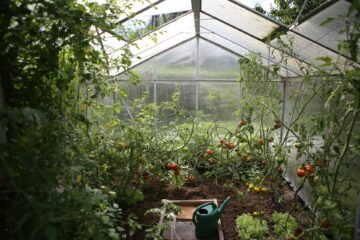I’m a big fan of gardening. The peacefulness, fresh air and beautiful plants are just so invigorating! There are times when I’d love to spend all day outside in my garden, but unfortunately life often gets in the way. Luckily, there are some easy ways to make your space more inviting even if you can’t always be there to enjoy it. Here are eight suggestions for creating a garden design that keeps your garden looking great while making it easy for you to take care of over time:
Create a garden design to be enjoyed from indoors
Now that you’ve created a garden design that is inviting and can be enjoyed from indoors, it’s time to make sure it’s comfortable for you as well. If you have windows in your home, try opening them up so that the fresh air flows through the house. If there are no windows or if they aren’t facing out into your garden design, consider installing some new ones!
Gardens can also be enjoyed from inside through vases full of flowers (or even fake ones) placed around rooms. You could also create small areas within larger spaces where plants are allowed to grow freely without being trimmed back too much–this will make them seem fuller than they would otherwise appear when kept under strict control by pruning shears all year long.
Keep your garden design easy to maintain
One of the most important things to consider when creating a garden design is how easy it will be to maintain. If you have a huge area of lawn, for example, and want to keep it looking nice, you need to make sure that there are no weeds growing in between the blades of grass. This can be done by using an automatic lawnmower or even hiring someone else to do it for you!
There are also many plants and shrubs which are perfect for any type of garden because they require very little maintenance work from the owner such as mulching around them every few months (or even less often than that). These include azaleas, ferns and hydrangea bushes: all three offer stunning foliage during springtime but then disappear beneath their own foliage once summer arrives–this means there’s no need for deadheading over these plants throughout year round!
Plan for the unexpected
When you’re planning your garden, it’s important to consider how it might change over time. You may want to use your garden for different things during different seasons or even years.
You also need to think about unexpected events–like rainstorms or unseasonably warm weather–and how those might affect what you have planned for the space. Don’t be afraid of making mistakes; if something doesn’t work out exactly as planned, just try again!
Make sure your garden design is safe
- Be careful of plant heights. Some plants can get quite tall, so you’ll want to make sure that they don’t block out the sun or interfere with other parts of your garden design.
- Be careful of plant spacing. If you have a small space and want to grow more than one type of plant, make sure that they’re spaced far enough apart so that they won’t crowd each other out when they grow bigger (or go dormant).
- Be careful about hardiness zones and pests! If you live in a colder climate, some plants may not be able to survive unless they’re brought indoors during winter months; others may attract pests like bees or ants if left outside too long without being pruned regularly.
Consider garden accessories that make your space more inviting
Garden accessories are a great way to make your garden more inviting. They can be functional or decorative, but they all have one thing in common: they help you enjoy your garden more.
- Functional – Some garden accessories have a specific purpose and serve as tools for tending to plants or maintaining the structure of the space itself. These include things like shovels, trowels, pruners and other hand tools; irrigation systems for watering flowers and plants; sprinklers for keeping lawns green during hot summer months; benches where people can sit down while admiring their gardens (or just taking a break from working on them); fences or walls that protect against wind damage when there are trees nearby; etcetera!
- Decorative – Other types of accessories serve no practical function whatsoever–they’re simply meant as decorations for their own sake (or perhaps as gifts). Examples include bird feeders so birds can come visit us year-round instead of just during springtime migration season; wind chimes that sing sweet tunes whenever breezes blow through them; fairy lights when it gets dark outside after sunset…you get the idea!
Choose plants that are attractive and interesting throughout the seasons
You can choose plants that are attractive and interesting throughout the seasons. You will want to choose plants that will thrive in your climate, so make sure you do some research on what kind of plant life grows best in your area. It’s also important to consider whether or not the plant requires lots of maintenance, such as regular watering or trimming back branches that grow too long.
You may want to avoid invasive species if possible, as these tend to grow quickly without regard for other organisms around them–which could be detrimental for some gardens (and even entire ecosystems). Additionally, if you have pets or children who play outdoors regularly, it would be wise not to use toxic plants because they could get into their mouths while playing around!
Think about how much time you have for gardening and maintenance and plant accordingly.
If you have a lot of time and energy, your garden can be very large. If you have less time and energy, then it might make sense to plant fewer plants in your garden. You can also hire someone to do the maintenance for you if that’s an option.
A welcoming garden does not have to be complicated or expensive.
A welcoming garden does not have to be complicated or expensive. Here are some things you can do:
- Choose plants that are hardy and low maintenance. Plants like sunflowers, cornstalks and pumpkins will add height and structure to your garden but won’t need much attention after they’re planted!
- Use plants that are easy to grow. If you live in an area where winters get cold, select hardy annuals such as pansies or cleome (also known as spider flower). These will bloom for just about eight weeks before dying back for wintertime dormancy–but don’t worry; they’ll come back again next spring! In warmer climates where there’s no frost threat at all (or even during mild winters), perennials such as lavender make excellent additions because they come back year after year.
If you’re looking to create a welcoming garden, there are many things you can do. It doesn’t have to be complicated or expensive. In fact, some of the most effective ways involve just adding some simple accessories and plants that will make your space more inviting. The key is finding ways that work best for your own lifestyle and budget so that everyone can enjoy their outdoor space!
Keep on top of your gardening with our free online journal
Our free online tool allows you to organise your ideas and garden plans and help you be as efficient as possible in the garden.
Sign up now

